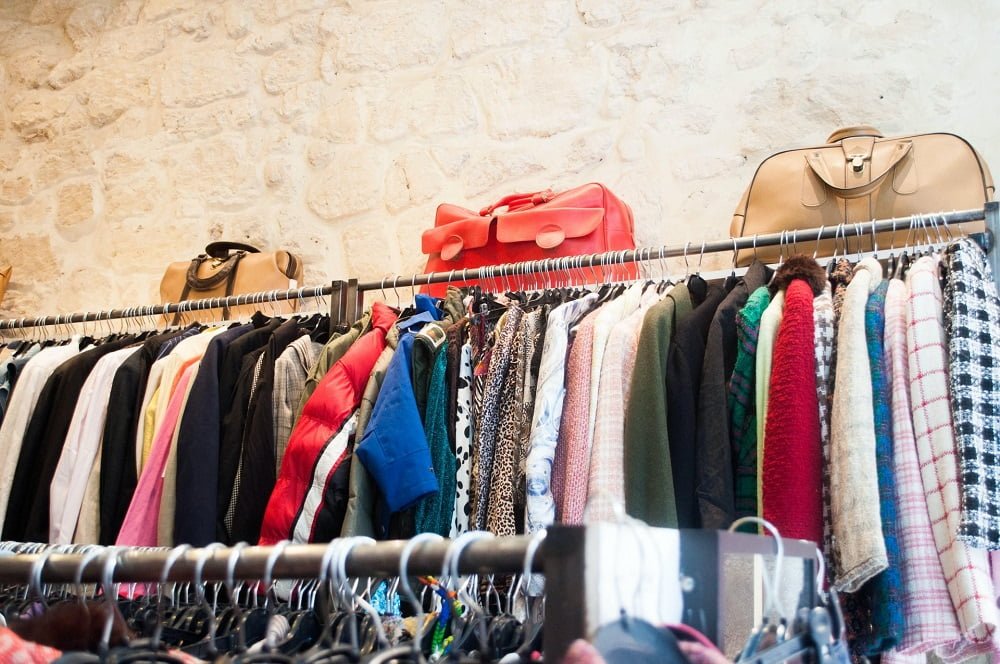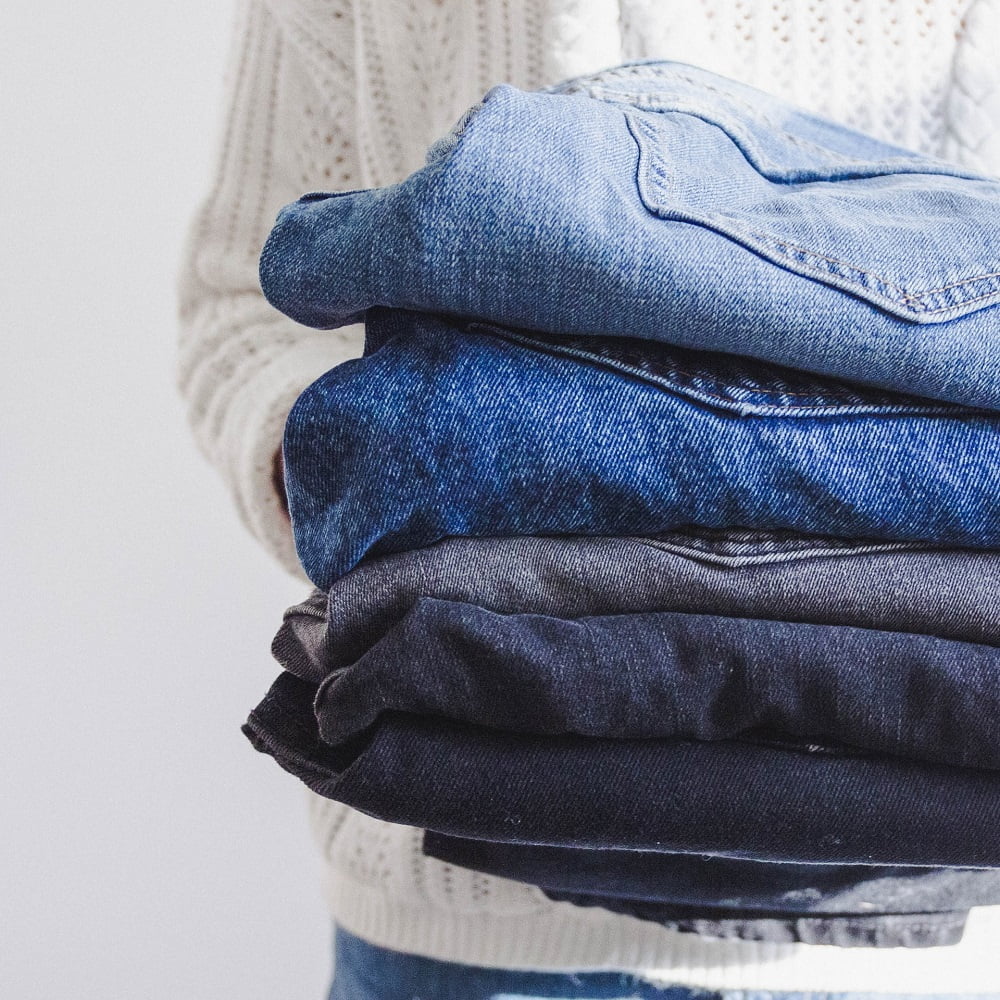A Guide to “Greening” Your Closet by Sustainably Disposing of Old Clothes
By Lena Milton
Why Recycle Your Old Clothes?
The fashion industry is one of the most environmentally-unfriendly industries, as it not only emits large amounts of greenhouse gases, but also creates high levels of pollution and produces microplastics, which harm wildlife and human health.
Despite the fashion industry’s undeniably negative impacts, more and more clothing is produced every year. While only 1.4 million tons of clothes were made in 1960, as of today, that number has increased by more than ten times. Overall, 93 million tons of fabric (including clothing and other fabric-based products) is produced every year.
Unfortunately, much of this clothing that is made does not get recycled. The main source of textiles in landfill is clothing. In fact, while almost 13 million tons of clothing was produced in 2018, only 1.6 million tons of it was recycled, and 9 million tons was put into landfills. To put this into perspective, that’s about the equivalent of one full garbage truck of clothes being thrown into a landfill every second.
Clothing does not degrade for hundreds to thousands of years when it’s put into a landfill. Not only does clothing in landfill take up precious land space, but it can also leach harmful chemicals into soil and groundwater. While some clothes are lab-tested for the presence of harmful chemicals, many are not, and even tested clothing can still contain harmful materials.
As consumers, we have the power to push for sustainability, especially through making environmentally conscious personal choices. A good first step to helping make the fashion industry more sustainable is making sure you’re getting rid of your clothes in an environmentally responsible way.
This guide will help you understand the steps you need to take to properly reuse or recycle your old clothes.
See also: Living Zero Waste: 7 Common Mistakes to Avoid In 2022
How Are Clothes Recycled?
The first step in clothing recycling is sorting the donated clothes by fabric type and color. The clothes are then shredded by a machine, cleaned, and then are remade into yarn. This yarn can then be reused to weave new clothing fabrics.
If the fabric cannot be spun into yarn, it may be made into a soft filling material used for insulation or filling mattresses.
The difficulty of the recycling process depends on the type of fiber. While almost every kind of fabric can be recycled, some fabrics are easier than others to process. For example, synthetic fibers like nylon or polyester are much easier to process than natural fibers like cotton or linen. This means that synthetic fabrics are more likely to be recycled and made into new clothing. However, these synthetic fibers often have other environmental costs that are not created by natural fibers.
How to Recycle Old Clothes
There are several steps you can take to recycle your old clothes properly.
1. Upcycle
Before simply disposing of the clothes you no longer wear, consider reusing them in a new way. The best way to recycle fashion is to reuse, or “upcycle,” the clothes yourself.
Clothing upcycling options may include turning those old jeans into a new pair of shorts or using your favorite old t-shirts to make a cozy quilt. Thousands of tutorials for how to use old t-shirts and other clothes can be found online.
Another good option is to turn your old clothes into rags for cleaning. This is also the simplest option for reusing old clothes. Just tear or cut up your old clothes into rag-sized pieces and get cleaning!
2. Sell
Consider re-selling your clothes online or at a consignment shop. Buying from and selling to thrift stores helps reduce the impact of the fashion industry, as fewer new clothes are needed. Reducing our overall consumption of newly produced clothing will help reduce waste, as well as pollution stemming from clothing production. And who knows – that old shirt of yours that you never wear anymore may just be someone’s new favorite shirt!
Selling online is made easier these days through sites like Depop and Thred-Up that allow you to create a selling profile and post your clothes for sale, all without leaving the comfort of your own home. So if your clothes are still in good shape, you can actually make a profit while getting rid of them in a sustainable way.

3. Donate
If your clothes are still wearable but you don’t want to go through the hassle of selling them, consider donating them to a charity thrift store or homeless shelter. Some good examples are Goodwill and the nonprofit American Red Cross, who works with the program GreenDrop to sell donated clothes and make a profit for the American Red Cross. Dress for Success also accepts donated professional clothing to help provide professional clothing to low-income communities. Lastly, Free the Girls takes donated bras and helps financially support victims of sex trafficking.
By donating your clothes, not only do you help make the fashion industry a little bit more sustainable, but you can also help people in need. If there’s a specific cause you’d like to contribute to, you may be able to find an organization working to use donated clothing to support that cause.
4. Sort your clothes
If your clothes are too worn to be reused or donated, then recycling the clothes is a fantastic option. Before simply recycling the clothes in a bundle, make sure to sort them by material, as some materials can be disposed of in different ways.
First, natural fibers (wool, cotton, silk and linen) can actually be composted! This is a good option for natural fabrics because, as we discussed above, natural fibers are harder to recycle.
Before composting, check the materials. In order to be composted, they must be 100% natural. Next, remove any additional materials that are not natural (eg. buttons, zippers, and paint). Simply cut the clothing into small pieces and add it to the compost bin. If you don’t compost at home, check if your city has a composting program.
There are also some recycling programs that focus specifically on certain clothing types or materials. For example, the Blue Jeans Go Green campaign will accept your old denim clothing and recycle it into new products.

Lastly, before donating your clothes to be recycled, make sure to sort through the clothes for any that are wet or moldy. These can contaminate other clothes in your pile, making everything unrecyclable.
5. Drop off clothes to be recycled
While it would be nice, unfortunately you can’t just drop your old clothes in your home recycling bin. Instead, you will need to drop your clothes off with an organization that recycles clothes.
Many thrift stores like Goodwill will recycle clothes that can’t be resold. For example, if your hoodie has a big stain or hole, donation centers will send the clothes to be recycled, rather than trying to resell it.
Some retailers also have recycling programs. For example, the recycling company I:CO works with several major brands including Forever 21 and the North Face to recycle donated clothes.
If you’re having trouble finding a place to drop off your clothes, there are plenty of online search tools to help you find a donation center. For example, for help finding a place to recycle, visit Earth911’s recycling search finder. Just enter your zip code and find places near you to recycle old clothes.
Recycling your old clothes is a fantastic way to live a more eco-friendly lifestyle, and it’s something that we can all do with low effort. So instead of tossing that bag of old clothes in the trash, take the time to find a recycling option!